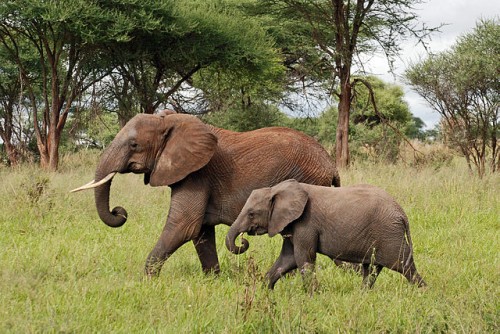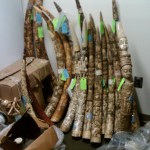
Are we connecting the dots to see what needs to be done? In my book on combating international wildlife crime[i], I spoke of the importance of bringing together all pieces of the jigsaw. If we do not, we are unable see the full picture and, without that ‘helicopter’ view, it is impossible to bring the right strategies to bear.
I made the point that no single organisation has sufficient pieces of the puzzle and that it takes a multi-agency approach to gain the understanding and overview which is so essential.
I was reminded of this a couple of weeks ago when the U.S. State Department asked me to be part of a panel at the 16th International Anti-Corruption Conference; on this occasion in Malaysia. A session, entitled ‘Turning a Blind Eye: Combating Corruption Facilitating Wildlife Trafficking’[ii], was apparently the first time that this crime-type had featured on the agenda of the event.
I believe it was important to bring the issue of criminal exploitation of fauna and flora before that audience and the session appeared to be well-received. However, from a personal point of view, I also found participation fascinating and learned a great deal during the three days of the conference. It was co-organised by the Malaysian Anti-Corruption Commission and Transparency International (TI). Consequently, most delegates appeared to either be from national anti-corruption agencies or from various advocacy groups (particularly TI chapters from around the globe). I noted that there were relatively few delegates from ‘mainstream’ law enforcement bodies. Although the UN Office on Drugs and Crime was represented, I saw no one from INTERPOL or the World Customs Organization. It was this that first prompted me to wonder whether the dots are being joined together.
There were exceptions, though. The FBI had agents there from its Asset Recovery Unit[iii], which is apparently determined to work more at the international level.
One of the first slides in my presentation featured the image of a large grey creature with big ears and two white points protruding from its face. It seemed highly appropriate, when talking of corruption and wildlife trafficking, to refer to ‘the elephant in the room’. After all, corruption is a word one seldom hears at meetings of the Convention on International Trade in Endangered Species (CITES), despite the fact that corrupt practices infest many parts of the Convention’s administration, regulation and enforcement. I posed the question whether it is perhaps time for CITES to adopt a resolution on the subject. But those are dots which I will attempt to link up some other day.
It was interesting over the course of discussions in Malaysia to see how many of the lobby, research and advocacy groups have moved from initially focussing on corruption itself to examining how corrupt persons disperse and disburse the funds they have acquired through their illicit activities. This is logical, of course, and it also means that several of these groups, NGOs and individuals (especially investigative journalists), have acquired knowledge of, and detailed insights to, issues such as money-laundering and asset recovery. After all, a most effective way of hitting the corrupt (and also organised crime group and network members) is through their pockets; blocking access to their ill-gotten gains or, ideally, seizing those funds can sometimes be as valuable as bringing criminals to court. Reducing the profitability of any criminal or corrupt activity makes it considerably less attractive.
Attending the various conference sessions brought home to me, or heightened my consciousness of, aspects of which I was probably already aware. But it sometimes takes sitting listening to descriptions of what someone has examined, with regard to for instance corrupt behaviour by a politician, to prompt one to appreciate that the very same applies in relation to how wildlife criminals may be using, and concealing, their profits.
I was intrigued, for example, to hear of the work that TI’s British branch has done in examining the very suspicious circumstances surrounding the purchase of high-value real estate in London. And it isn’t restricted to bricks and mortar; those engaged in laundering money and concealing illegally- and corruptly-acquired funds are regularly engaged in buying a vast range of expensive goods. This can run from supercars to yachts, and includes educating their children at some of the UK’s most costly ‘public’ schools.
It emerged that many nations’ existing legislation, designed to identify and deter money-laundering, is restricted to payments into bank accounts or other transactions involving financial institutions. Consequently, it may only be banks and specifically-designated institutions that are currently required by law to report payments and money transfers which come within legally-defined ‘suspicious transactions’; leaving the financial dealings conducted by estate agents, lawyers, luxury-goods sales staff, etc. totally excluded from scrutiny. Several countries are in the process of expanding their reporting requirements, with regard to who is obliged to report and what they must report upon.
This appears, at first sight, eminently sensible and laudable. But two things struck me.
First, it was reported during more than one conference session that compliance with reporting requirements, even in the most developed nations around the globe, falls well below, sometimes very far below, current legislative obligations. Secondly, very few law enforcement agencies currently have the capacity to respond adequately to what is already being reported. Raising the piles of paper in financial intelligence units’ In-trays, or further filling their email Inboxes, is hardly likely to make life easier for them.
And we really must make their lives simpler. There appears to be a real willingness for sections of the enforcement world to come to grips with the proceeds of crime and corruption. The Metropolitan Police of London and the UK’s National Crime Agency were both held up as examples of good practice, but also of organizations that are close to being overwhelmed. Perhaps there are just too many dots? We also must acknowledge that considerable priority is presently given to examining financial transactions where the suspicious monies might be funding terrorism and, so, organized crime cash may take a back seat.
It was at this point where one of my constant bugbears surfaced; that we don’t share the dots we hold nearly enough or swap sufficient numbers of jigsaw pieces.
As someone who spent many years as a Detective, I know very well that something which initially appears suspicious can often subsequently prove to be wholly innocent. Sorting the wheat from the chaff and the good from the bad can be difficult and time-consuming. But it doesn’t have to be rocket-science. It all depends upon having the right information; what the enforcement community usually refers to as ‘intelligence’. And it is accessing the right intelligence which is more than half the battle.
Sometimes what we need is right in front of our noses. For instance, it is incredible how stupid and reckless the corrupt and criminal among us can be. After all, if one has ‘extra’ cash, it is terribly tempting to spend it. Umpteen rotten apples in the Police service have uncovered themselves over the years by arriving for work driving flash cars, or returning from luxury holidays, that could not possibly have been paid for simply through their monthly salary.
How many times during our lives have each of us looked at someone, maybe someone who we know relatively well, and asked ourselves, “How can he/she afford that?”
When a Game Scout, Warden, Forest Guard, Constable, Trooper, Deputy or Customs officer asks themselves such a question, particularly when it relates to someone they already suspect of being linked to crime, what more are they doing? Are they sharing that suspicion with colleagues in another, relevant, agency? Such as a financial crime unit?
Two times in my life, I have been obliged to supply my bank with justification for my possession of significant sums of money I sought to deposit in my account. Once, it related to a pension lump sum payment and, on the other occasion, it was funds resulting from a house sale.
I do not know whether either amount subsequently became the subject of a suspicious transaction report; probably not. What I do know is that I was not dragged into a police station and interviewed. Run through an intelligence database, the name John M. Sellar probably did not ring any alarm bells. However, I probably would have been subjected, quite rightly, to the third-degree had my name already been in the files because I had been spotted keeping company with well-known rhino poachers. It can sometimes really be that simple. After all, Al Capone was jailed for tax evasion, not for being the leader of a Chicago gangster mob.
It is all very well to call out, ‘Follow the Money’, but do not be surprised or disappointed if the cops turn round and ask, “Which money?” or “Whose money?”
How many of the countries that are currently worst-hit by organized crime, and especially wildlife trafficking, have national criminal intelligence databases? And, of those that do, are all relevant agencies submitting information and intelligence to it? How many of those agencies can interrogate the database, to seek out existing knowledge on persons of interest to them? (On a need-to-know basis sometimes, of course.) Can the State’s financial crime unit access the database?
I can tell you, ladies and gentlemen, as someone who has visited over sixty nations of the world, that precious few countries have such arrangements in place. And, if you think that’s bad, you should see the abysmal amount of intelligence which is shared cross-border or with international enforcement organizations. If NGOs and lobby groups want a cause to pursue, go check out this aspect and demand the establishment of a central criminal database in every territory across the globe.

I wish I had had the opportunity to attend an International Anti-Corruption Conference in my early career. I have to be honest and say that I did not even know such events took place. Yet, I was one of the privileged few who were able, through working in an international organization, to have the helicopter view and, in many respects, to see the big-picture. It is an advantage to which all too few in the enforcement world gain access.
The amount of resources that, technically and theoretically, are available to investigators these days is bewildering. Keeping up with developments can be almost a full-time occupation. It is utterly vital that we do all we can to disseminate knowledge, spread the word, offer support and seek engagement. At the same time, we must battle parochialism, inter-agency turf wars, lack of imagination and the go-it-alone approaches of old.
I left Malaysia thinking, as I so regularly do after attending international events, that organized crime is still running circles around us. And that, to a degree, we have no right or basis to moan and groan because many of the answers are within our grasp, if only we would reach out.
But, once again and here too, enforcers cannot do it all alone. Governments, particularly those which seek foreign investment, or which offer entry visas to those with enough money to purchase them, without employing sufficient scrutiny and due diligence – whilst closing borders to dispossessed and oppressed refugees – need to alter their policies, since they give the appearance of a corrupt and criminal, rather than caring, society. Enacting money-laundering and asset-seizure legislation does not let you off the hook, if you do not also provide adequate resources to those tasked with implementing such laws.
It is like asking someone to complete a jigsaw whilst not giving them a table on which to place the pieces. Connecting the dots in mid-air truly would be in the realm of rocket-science.
But if those who hold pieces of the puzzle do not bring them to the table, we will never see the picture and the corrupt and criminal will remain hidden.
NEXT:
- Part 2 – International Wildlife Crime: Counting the Dots
- Part 3 – International Wildlife Crime: Are We Rubbing Out the Dots?
[i] http://www.whittlespublishing.com/The_UNs_Lone_Ranger_Combating_international_wildlife_crime
[ii] http://16iacc.sched.org/event/80d8c31396fdf75a40dcfb7bd4c874de#.VfgfE1Plt9A
[iii] http://www.state.gov/j/inl/rls/fs/2015/246651.htm




